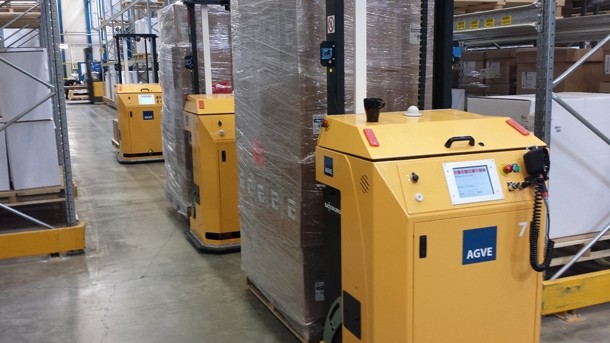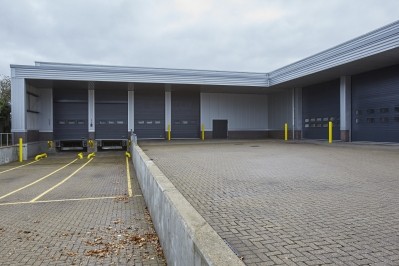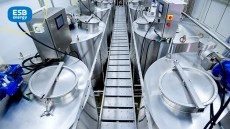How does your food store score?

If, as seems likely, more food manufacturers start to focus on their own ‘omni-channel' options for routes to market (rather than just those of the retailers), this begs the question: is their onsite and third-party warehouse handling and storage fit for purpose? Or is it more omni-shambles than omni-channel?
At the UK Warehousing Association (UKWA), chief executive Peter Ward draws a sharp distinction: “A lot of current warehousing has been built to provide economies of scale, with wide aisles and a pallet-in-pallet-out mentality. But what is increasingly being required is a fulfilment centre, and a radical change in thinking is needed.”
Food industry warehouse managers will point out that the UKWA represents – chiefly – third-party logistics (3PL) and warehousing providers rather than manufacturer-run operations. As such, its outlook is likely to reflect more of the dynamic interface between multiple manufacturers and the different retail channels.
In terms of their own stack-‘em-high supermarket model, the retailers themselves have been moving away from economies of scale, says Ward, and that is necessarily being reflected in logistics. “You can't be replenishing a Tesco Local store every hour or two from a depot more than a few miles away,” he argues. “And you're more likely to rely on a 3PL provider.”
But a heady blend of threats and opportunities is also affecting the manufacturer's outlook. With retailers casting around for the winning number and range of stock-keeping units (SKUs) – and in the process doing nothing to reassure already insecure suppliers – with unrelenting pressure on prices and margins, with the rise of the discounters and inner-city convenience formats and, of course, with the growth in online and home-delivery sales, food businesses are taking a hard look at who they supply and how they supply them.
Omni-channel models (RETURN TO TOP)
At logistics consultancy LCP, chairman Alan Braithwaite says: “Price and cost pressures, together with listing threats, are breaking the traditional retailer-manufacturer relationship. As a result, suppliers are now looking at going direct with new omni-channel models to ‘dis-intermediate’ conventional retail. All bets are off in the new world.”
Food producers may be unaware they are dis-intermediating, or they may not yet have started the process. Or, there may already be other changes taking place within the ‘traditional retailer-manufacturer relationship’, such as the number of shifts worked in production, warehousing and dispatch.
In fact, as equipment supplier Narrow Aisle points out, the term ‘warehousing’ should be replaced by ‘intralogistics’. Importantly, according to the dictionary definition, intralogistics is as much about the flow of data as it is about the flow of product.
But for many, as the company’s own name suggests, the most urgent consideration is aisle-width rather than bandwidth. The availability of storage space and the most efficient ways of managing it loom large as issues both for manufacturers and their 3PL partners.
The UKWA is concerned that, as London and other cities continue to grow, the cost of land and the primacy of residential development will push distribution and warehousing out to the margins. This is despite the fact that access will be required to larger numbers of consumers with higher expectations of convenience, it says.
The same space constraints apply within the walls of many manufacturers' warehouses. And, according to LCP, problems are again exacerbated by high expectations – this time, the expectations of retailers. “There is huge pressure on manufacturers with rapid own-label contract churn and with short lead-times to going live,” says Braithwaite. “This is leading to a growth in temporary or prefab plant and storage solutions with fast installation and reduced planning.”
That may be the case where factories have the space to expand, even on a temporary or improvised basis. But operations on old or established sites will often not have even that luxury. Without the capital to migrate to a greenfield site, companies are forced to juggle existing production and warehousing space to gain the best advantage.
At automated guided vehicle (AGV) specialist AGVE, md of the UK business and former automation consultant Neil Smith points to the growing prevalence of narrow aisle (or very narrow aisle – VNA) solutions.
Very Narrow Aisle trucks (RETURN TO TOP)
While a traditional warehouse aisle might be 3m or more across, he says, the VNA option is typically 1.5m. This can be combined with standard racking, double-deep racking (which requires more careful inventory planning) or shuttle-racking, which uses a type of built-in AGV system to position and retrieve product. Another option is mobile racking, which is densely packed but slides sideways like library stacks to allow access, and is often used for chilled or frozen storage.
Smith explains: “Narrow aisle is fine so long as you have well-defined and consistent pallets that don't break down. But it's a relatively expensive solution, because VNA equipment, whether automated or manual, tends to be costly.” In round figures, a traditional forklift truck (or ‘stacker’) might cost £12,000, says Smith, while a wide-aisle reach truck is likely to cost around £40,000. But a VNA truck could have a £100,000 price tag.
“So if a manufacturer or 3PL provider only has, for instance, a three-year contract, they may not feel they can justify investing in VNA,” he says.
How much investment has come from the food and drink industry is not clear, but Ward at the UKWA reports that suppliers of material handling equipment (MHE) “have never had it so good” since the 2008 recession. These allegedly full order books can be largely put down to demand for VNA systems, he claims.
At MHE supplier Jungheinrich, marketing manager Craig Johnson confirms that demand for both VNA machines and reach trucks has increased considerably. The development of smaller systems with consistent capability has been helped by the greater availability of compact lithium ion batteries. “Energy efficiency is on a par with or slightly better than traditional batteries, and in a busy environment, you can recharge up to 50% of the battery in just half an hour, which is very fast,” he says.
How much automation? (RETURN TO TOP)
The degree of automation a manufacturer chooses to implement is likely to depend on the number of shifts it operates. “A small business will tend to start off with a single shift or two shifts,” says Smith at AGVE. “But when the bigger manufacturers are producing around the clock, they will not be replacing just one driver, they may be replacing four or five.” Those savings will make investment in equipment easier to justify.
There are semi-automated options. “We have automatic VNA options, but also semi-automated systems, which can be used like a normal truck – for a manual stock-check, for example – but can also be run automatically using the electronic controller,” says Jungheinrich’s Johnson.
Remote pilot system (RETURN TO TOP)
Later this year, the company will launch its Remote Pilot system for manual order picking. “The truck automatically follows you like a dog, while you're walking to the next pick,” he says.
As Ward at the UKWA explains, many food businesses are dealing in fewer uniform, single-SKU pallet loads than was the case only a few years ago. This may be because of evolving retailer demands or the manufacturer's own alternative routes to market.
So, for example, Narrow Aisle has introduced its FlexiPick truck to grip and transfer single or multiple layers of product and create a composite pallet load. “Thanks to the economies involved in packing layers, a full layered pallet of 50 cases can be picked for up to five times less cost than traditional manual case picking,” says commercial director John Maguire.
One reason why a business might invest in full warehouse automation, assuming it has the will (and funds) to do so, is safety. Jungheinrich’s Johnson quotes Health and Safety Executive (HSE) figures that put the proportion of UK transport-related workplace injuries involving forklift trucks at 24%.
“Accidents with fork trucks are not as frequent as slips or trips, for example, but the injuries which result can be far nastier,” says Smith at AGVE. “If I was moving to a new site and wanting to be proactive, doing away with forklifts would be a good way of doing that.”
Companies such as Jungheinrich, which founded its business on driver-operated systems, have responded by building automated features into their equipment. For example, Jungheinrich has a camera-based shape-recognition system that causes the vehicle to slow down automatically if a human shape is identified. There are other systems, says Johnson, which use infrared and which respond to tags around operators' necks.
Nor will managers’ concerns be limited to their staff. Forklift trucks can also wreak havoc with racking and machinery. Here, Jungheinrich has its EasyAccess system, which uses personal identification numbers to log who is driving a truck at a given time.
Finally, of course, outright purchase of equipment is only one option – and not always the most favourable for small or seasonal food businesses.
Maguire at Narrow Aisle says: “The short-term hire of lift trucks, once a largely unplanned and stop-gap measure for organisations with a need to cover seasonal peaks, is now an important part of many leading companies' business models.”


















